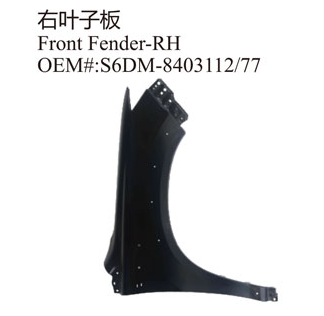Under the condition of modern market economy, there are differences in time, place, information, product quantity, product variety, product price and product use between automobile post market enterprises and car owners. Only through certain distribution channels can the products produced by automobile aftermarket enterprises be provided to the majority of car owners at the right time and place at the right price and in the right way. Therefore, the right choice of a short-term, fast, low cost, high efficiency product distribution channel has become an important strategy for automotive aftermarket enterprises to explore the market.
The design of distribution channel in automobile aftermarket is mainly about the length and width of distribution channel. There are many factors that affect the design of distribution channels, among which the main factors of automobile sheet metal parts are as follows.

Different characteristics of products require different distribution channels.
1. Value. Generally speaking, the smaller the unit price of goods, the wider and longer the distribution channels, in order to pursue scale efficiency. On the contrary, the higher the unit price, the shorter and narrower the channel.
2. Volume and weight. For products with large volume and heavy weight, such as large-scale machinery and equipment used for automobile maintenance, it is required to adopt the channel with the shortest transportation route and the least transportation times in the transportation process, so as to save the logistics cost.
3. Fashion. Fashion goods with fast changing styles, such as car cushions and car pillows, should also adopt short and wide channels to avoid unnecessary losses.
4. Degree of standardization. The higher the degree of product standardization is, the more likely it is to adopt middlemen. For example, general auto parts, standard tools, etc., with low unit price and gross profit, are often transferred through wholesalers. For some customized products, enterprises should produce according to the requirements of direct consumers, and the producers usually send their own staff to sell directly.
5. Technical content. The higher the technical content of the product, the shorter the channel, which is often sold directly to the enterprise consumers, because the products with high technical content often need to provide various pre-sale and after-sale services.
6. New products. New products have just entered the market, middlemen are often reluctant to bear the risk to sell, and producers need to organize their own sales teams to open the market as soon as possible.
Market factor is one of the most important factors in the design of distribution channels, mainly including the following aspects:
1. Market type. Different types of markets require different channels to adapt to them. For example, the purchase behavior of car owner consumers is different from that of enterprise consumers, so different distribution channels are needed.
2. Market scale. If there are fewer potential customers for a product, the automobile aftermarket enterprises can send their own sales personnel to promote; if there are more potential customers, the distribution channels should be longer and wider.
3. Customer concentration. Under the condition of a certain number of direct consumers, if the direct consumers are concentrated in a certain area, the enterprises can send people to sell directly; if the direct consumers are relatively scattered, the products can only be transferred to the direct consumers through middlemen.
4. Quantity purchased by users. If the number of direct consumers is large and the purchase frequency is low, short and narrow channels can be used; if the number of direct consumers is small and the purchase frequency is high, long and wide channels should be used.
5. Distribution channels of competitors. When choosing distribution channels, we should consider the distribution channels of competitors. If your products have advantages over competitors, you can choose the same channel; otherwise, try to avoid.
Copyright By © Jiangsu Halreal Vehicle Industry Co., Ltd. Powered by Yicheng Network